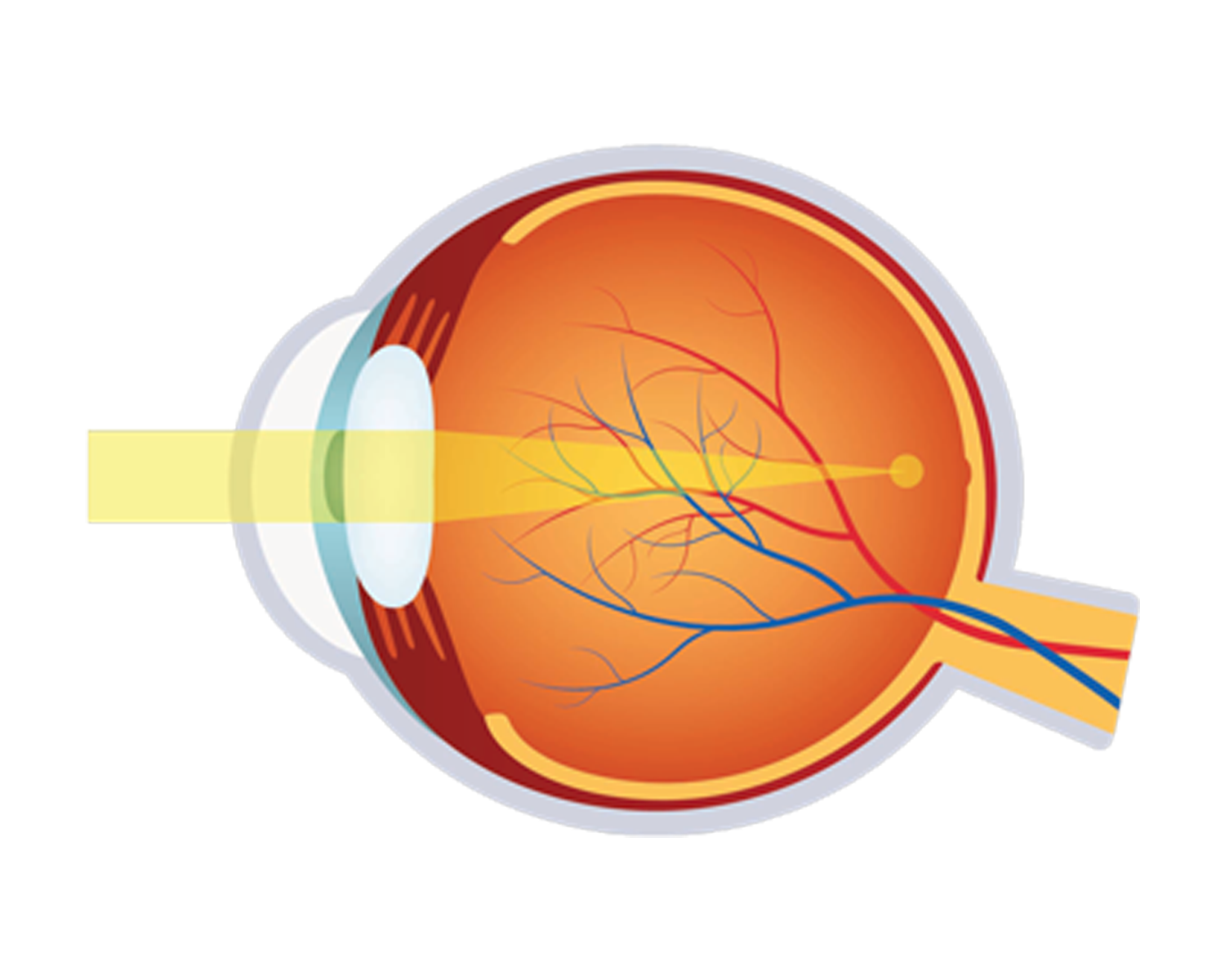
Myopia
Myopia, commonly known as nearsightedness, is a refractive error in the eye where objects close to you appear clear, but distant objects are blurry. This condition occurs when the eyeball is too long relative to the focusing power of the cornea and lens, or when the cornea has too much curvature. As a result, light entering the eye is focused in front of the retina instead of directly on it.
Symptoms of Myopia
- Blurry vision when looking at distant objects (e.g., road signs, television screens, or whiteboards in classrooms)
- Eye strain or discomfort
- Squinting to see objects more clearly
- Difficulty seeing at night (night myopia)
Causes of Myopia
Genetics: It often runs in families, suggesting a genetic predisposition.
Environmental Factors : Spending a lot of time doing close-up activities, such as reading or using screens, may contribute to the development or worsening of myopia.
Lack of Outdoor Activities : Studies suggest that spending more time outdoors may help reduce the risk of developing myopia.
Treatment Options
Glasses : The most common treatment, which corrects the focus of light entering the eye.
Contact Lenses : These work similarly to glasses but are worn directly on the eye.
Refractive Surgery (LASIK) : Surgical procedures can reshape the cornea to correct the focus.
Orthokeratology : Special contact lenses worn overnight to reshape the cornea temporarily.
If you suspect you have myopia or are experiencing blurry vision, it’s important to see an eye care professional for a proper diagnosis and treatment plan.


